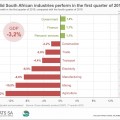
Economy stumbles in the first quarter
The South African economy slumped sharply in the first three months of 2019, contracting by 3,2%.1 Seven of the ten industries took a knock, with manufacturing, mining and trade the biggest contributors to the fall. Construction, mining and trade are in recession. The 3,2% decline is the biggest quarterly fall in economic activity since the read more »
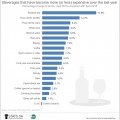
Pondering #NationalWineDay
25 May is National Wine Day! Here are a few fun facts to muse over if you’re planning to enjoy a glass or three. SA households spend more on wine than on coffee South Africans have clear priorities when it comes to drink. Wine takes up 7,2% of total household expenditure on alcoholic and read more »
Stats SA begins process of questionnaire consultation for Census 2021
Statistics South Africa (Stats SA) will be conducting the 4th population census in a democratic dispensation in 2021. Information collected from the census is crucial for proper planning in the country. Consultations on census themes and questions form part of mandatory census planning activities as prescribed in the Handbook on the Management of Population and read more »
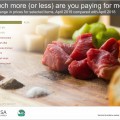
Inflation edges slightly lower in April
Annual consumer inflation softened to 4,4% in April 2019 after hitting a three-month high of 4,5% in March 2019. While food inflation remains quite stable, rising petrol prices continue to place pressure on consumers. Inflation has remained within the South African Reserve Bank (SARB) target range of 3–6% for two years (since March 2017). The read more »
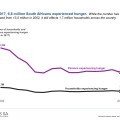
The Extent of Food Security in South Africa
Did you know that in 2017, 6,8 million South Africans experienced hunger? While the number has dropped from 13,5 million in 2002, it still affects 1,7 million households across the country. These figures were released in a recent survey, “Towards measuring the extent of food security in South Africa: An examination of hunger and food read more »
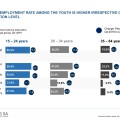
Youth graduate unemployment rate increases in Q1: 2019
The youth aged 15–24 years are the most vulnerable in the South African labour market as the unemployment rate among this age group was 55,2% in the 1st quarter of 2019. Among graduates in this age group, the unemployment rate was 31,0% during this period compared to 19,5% in the 4th quarter of 2018 – read more »
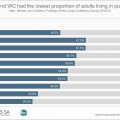
Five facts about poverty in South Africa
The Living Conditions Survey (LCS) is part of Stats SA’s household survey programme and provides detailed information on households’ living circumstances, as well as their income and expenditure patterns. Information from this survey was used to compile the report Men, Women and Children: Findings of the Living Conditions Survey 2014/15. Let’s take a look at read more »
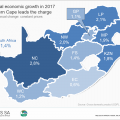
Four facts about our provincial economies
Each province is unique. Data published recently by Stats SA provide a portrait of South Africa’s provincial economies. Here are four facts you might not have known about our economic landscape. Fact #1 Gauteng is South Africa’s economic powerhouse Don’t let Gauteng’s size on a map fool you. It might be the province with read more »
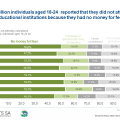
More than half of youth have no money to pay for their tuition
More than half (or 51%) of youth aged 18–24 claimed that they did not have the financial means to pay for their tuition. Furthermore, 18% of those aged 18–24 who were not attending educational institutions indicated that their poor academic performance prevented them from participating. This is according to the “Higher Education and Skills in read more »
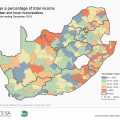
How financially independent are municipalities?
Spending and income play an important role in determining local government’s ability to deliver services. The ability of a municipality to generate its own income is an important sign of its independence. The Quarterly Financial Statistics of Municipalities (QFSM) survey collects data on municipal operating expenditures and incomes on a quarterly basis. The December 2018 read more »


